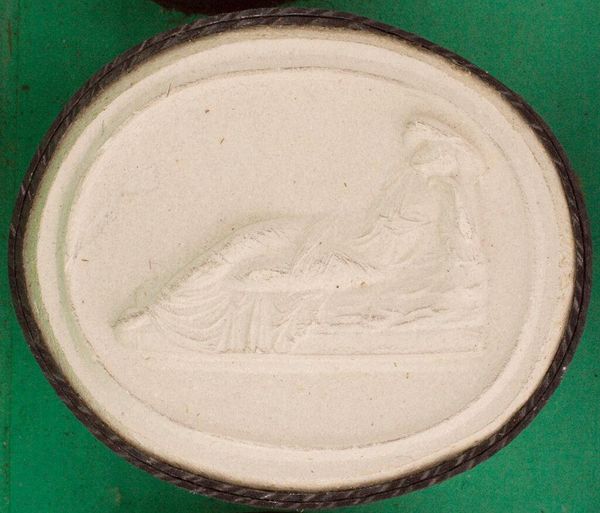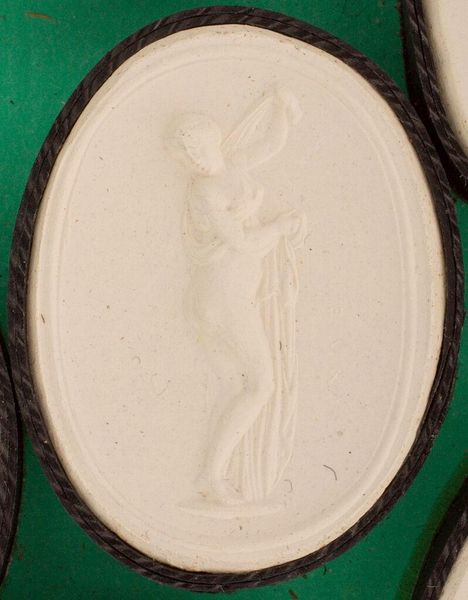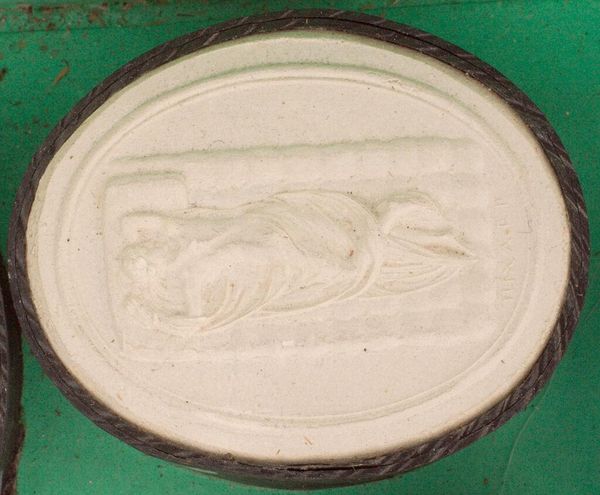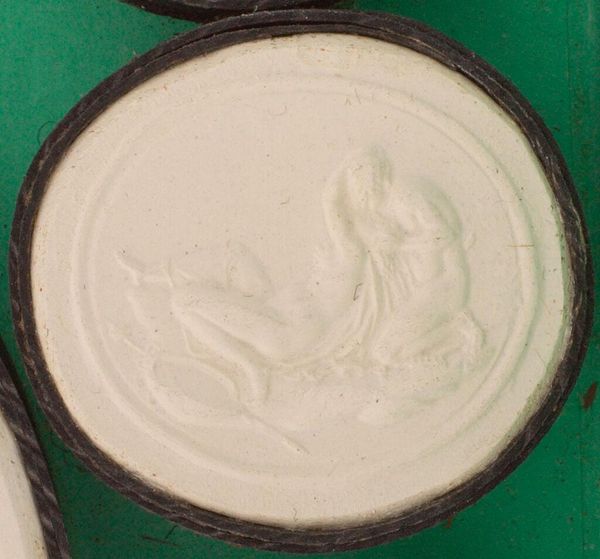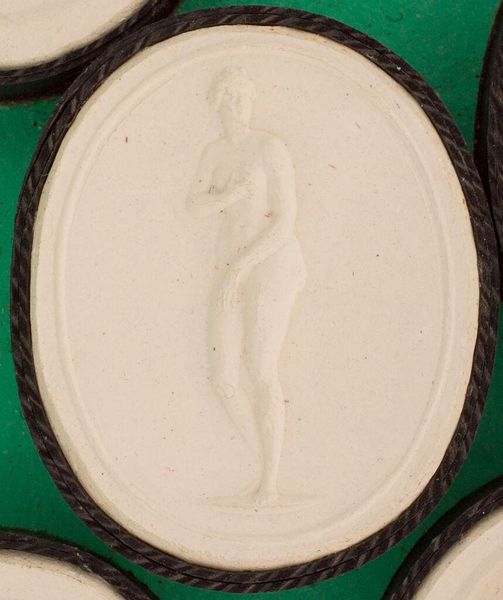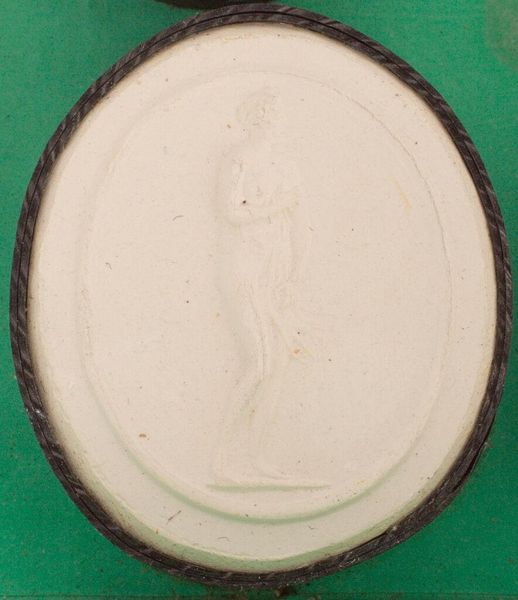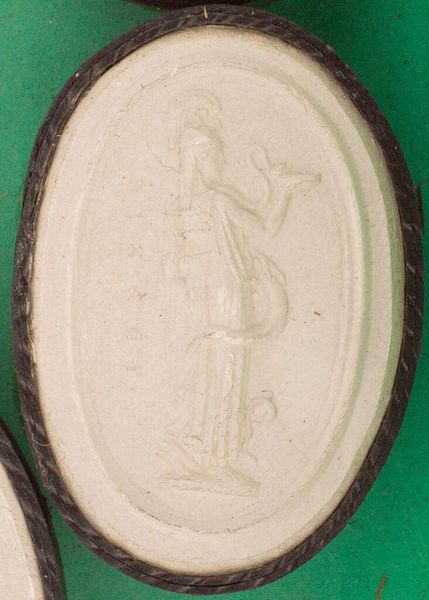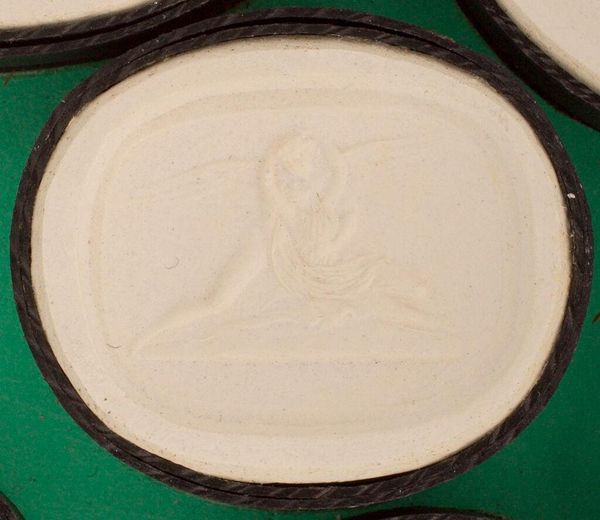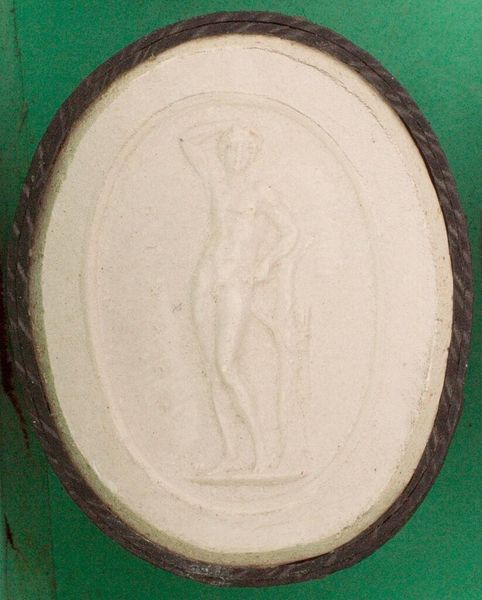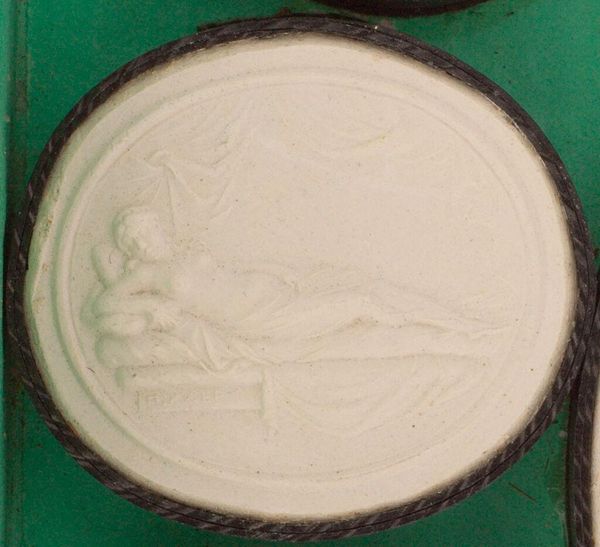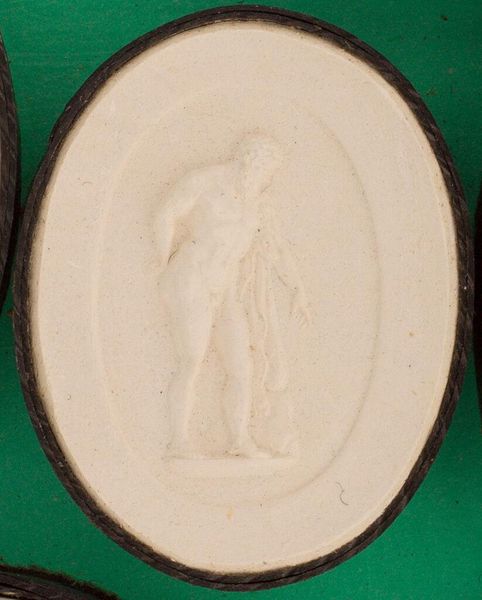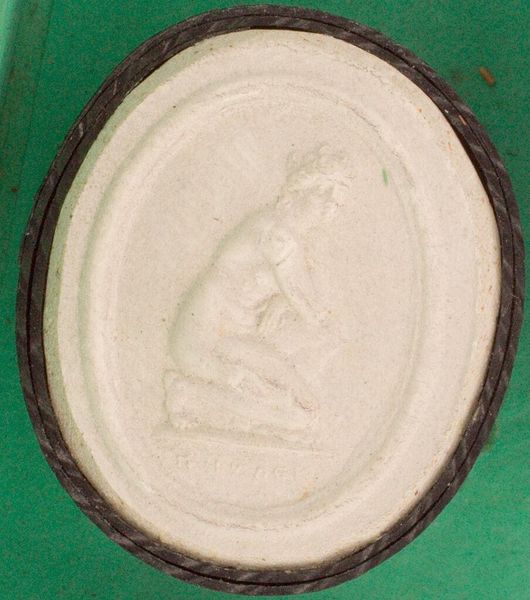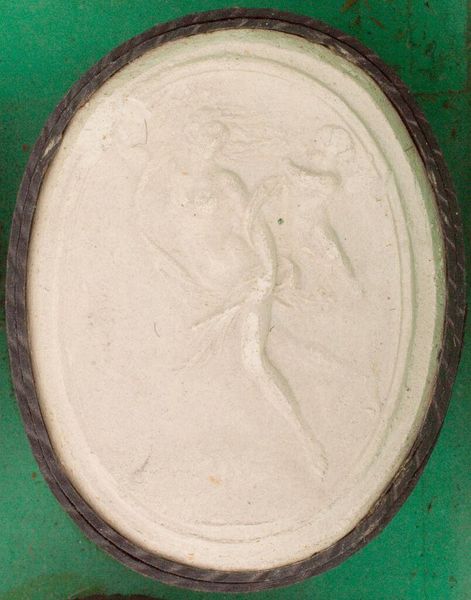
Dimensions: 2.9 x 3.5 x 1 cm (1 1/8 x 1 3/8 x 3/8 in.)
Copyright: CC0 1.0
Curator: This small plaster relief, only a few centimeters across, presents a "Wounded Gladiator, after antiquity," attributed to the Pichler family. It's in the Harvard Art Museums collection. My first impression is just how tender it is; the figure's pose really conveys defeat. Editor: Absolutely. The figure speaks volumes about vulnerability and the human cost of spectacle. The oval shape, too, feels like a contained world of suffering. I see how the image echoes the stoicism of the ancient world, where even in defeat, there’s a certain dignity. Curator: It’s that dignity that gets me. Even copied, it reminds us of the gladiators as both warriors and humans, caught in a brutal system. The simple, almost stark, white plaster forces us to focus on the emotion, not the gore. Editor: Indeed. It's a distillation of a complex narrative. That starkness also pulls forward associations with funerary art, almost as if this gladiator is being memorialized. Curator: It becomes a universal symbol then, of any fallen hero, any victim of violence. Editor: Precisely. The piece connects us not just to the ancient world but to every age where individuals face overwhelming odds.
Comments
No comments
Be the first to comment and join the conversation on the ultimate creative platform.
